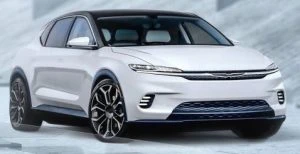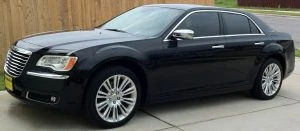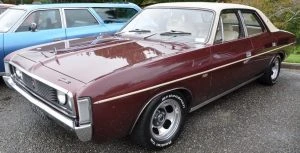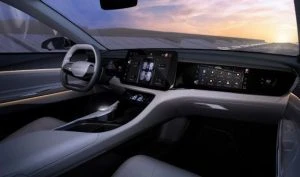Chrysler Airflow EV Concept

Chrysler Airflow EV Concept
For me, there are two cars in particular I enjoy seeing, and both for which proudly wear the Chrysler badge. I always take the time to admire them every time I walk past one on the street, or I’ll enjoy watching one as it rolls by out on the road. For me, the Chrysler 300 and the Chrysler Valiant are two great looking cars that provide plenty of power, comfort, and a special drive.
The Chrysler 300 came directly out of the American Chrysler line-up, and it offered a gangster-style (chunky, high waistline, plenty of power, large grille) with luxury and comfort, sedan or wagon. The Chrysler Valiant was a full-size car which was sold by Chrysler Australia between 1962 and 1981. To begin with, Chrysler Australia received the Plymouth Valiant from the United States and rebadged it to sell to the Australian market. However, from the second generation, which was launched in 1963, the Valiant was fully manufactured in Australia. The late 70s versions of the Valiant was my favourite.

Chrysler 300

Chrysler Valiant
So, what’s happening in Chrysler’s corner today?
January 2014 saw Fiat S.p.A. announce a deal to purchase the then struggling Chrysler brand, making Chrysler Group a subsidiary of Fiat S.p.A. In May of that year, Fiat Chrysler Automobiles (FCA) was established by merging Fiat S.p.A. By the end of the year, this group was renamed FCA US LLC to reflect the Fiat-Chrysler merger.
In 2021, Stellantis N.V. was formed, which is a multinational automotive manufacturing organization that is made up of a half-and-half merger between the Italian-American company Fiat Chrysler Automobiles (FCA) and the French PSA Group. Stellantis is headquartered in Amsterdam, and, in terms of a global scale, in 2021 Stellantis was rated as being the world’s 5th largest automaker behind Toyota, Volkswagen, Hyundai, and General Motors.
Though at the moment there aren’t a load of new cars with the Chrysler logo coming out, Stellantis is aiming to be an all-electric brand before 2030. At a recent show in America, Stellantis revealed a rather nice-looking Chrysler Airflow concept, suggesting that there is a lot more to come from Chrysler in the future.
Inside the Chrysler Airflow cabin is seating for four. Plenty of recycled materials and vegan leather are just some of the interior features on offer. It is a luxury car with a full panoramic glass roof, ambient lighting, and excellent sound proofing.

Chrysler Airflow EV Concept
Underpinning the new STLA EV platform, Stellantis made the Chrysler Airflow concept a reality, choosing this car for showing off the Airflow’s latest innovative drive-system technology that is fully connected to customer interaction and advanced mobility. The Airflow emphasises Stellantis’ desire to be cutting edge, to keep up with connectivity, and to produce sophisticated digital interaction.
The Chrysler Airflow EV concept boasts STLA Brain and STLA Smart Cockpit technology that connects passengers with their own digital lives. Thus, there are display screens front and rear, which are configured to suit each occupant, and these individual screens can interface with other screens inside the car using sweeping gestures. Each seat has its own camera, which can also be used for video conferencing as well as selfies. The Airflow EV also has autonomous driving capability, with power delivered by two electric motors, one on the front axle and one on the rear axle. Each electric motor on the concept Airflow boasts 150 kW, with a driving range said to be somewhere in the vicinity of 550–650 kilometres.
Certainly, the Chrysler Airflow EV concept is a neat looking Electric Vehicle, with tidy exterior lines, excellent aerodynamics, a long wheelbase, and a wide stance with a low profile. It would be swift, luxurious transport, fitting for the Chrysler brand, and a nod to the Chrysler greats.